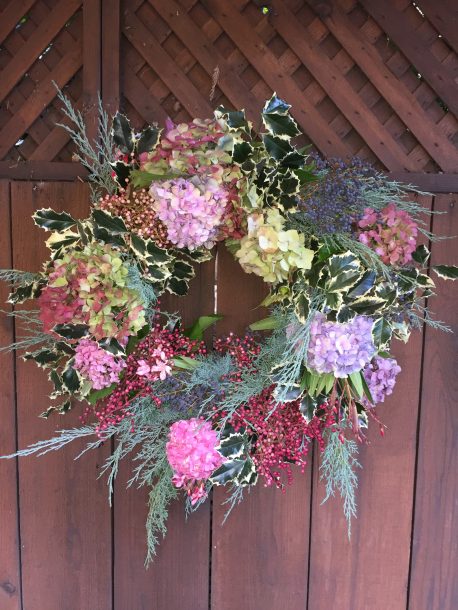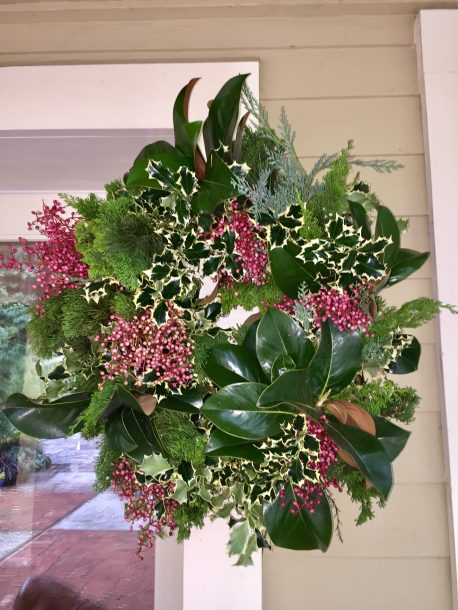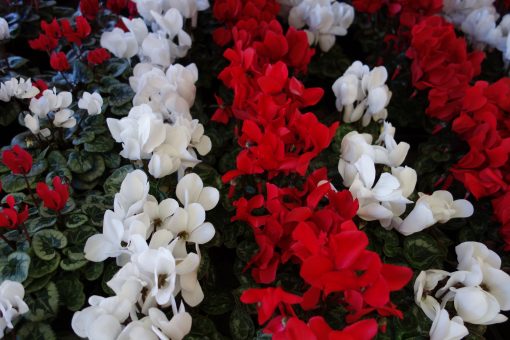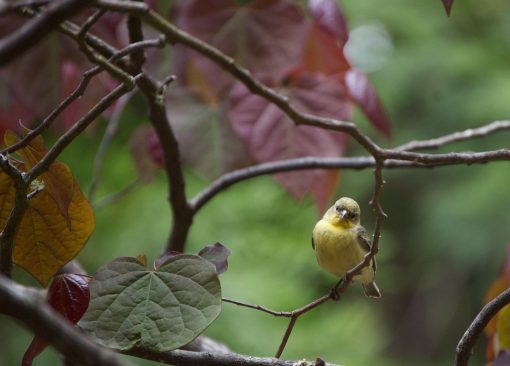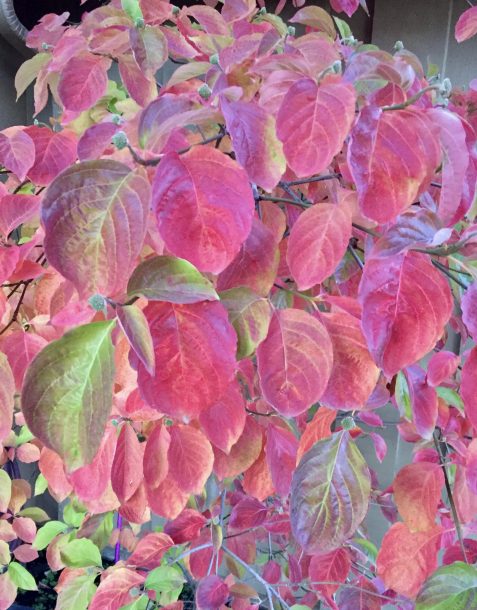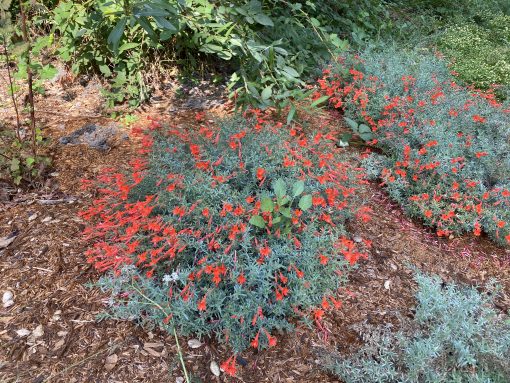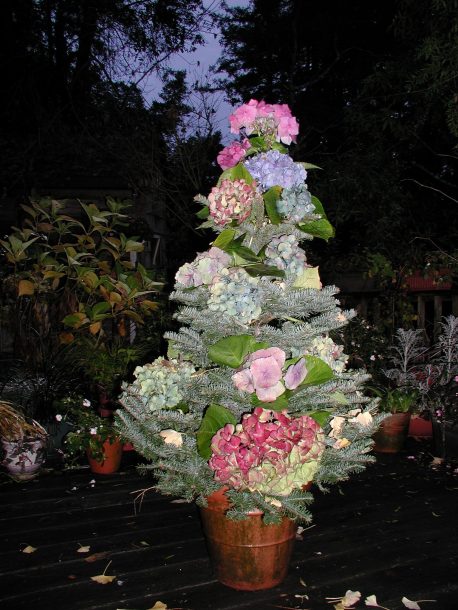
We all celebrate the holidays in a different way. Each family has their own traditions and warm memories from years gone by. Some of us celebrate Christmas, some Hanukkah, some Kwanzaa. Many of our traditional Christmas customs originate from Winter Solstice celebrations. The plants associated with each are an important part of tradition and symbolism.
Winter solstice is the 21st of December. Solstice literally means “Sun Stands Still’ and for a few days around this time of year the sun appears to stand still in the sky. Nearly all cultures and faiths have some sort of winter solstice celebration. They have been with us for thousands of years starting at the beginning of agriculture among people who depended on the return of the sun. We have incorporated many of the plants from traditional winter solstice celebrations into our own- holly, ivy, evergreens, rosemary and mistletoe. How did this come about?
Holly remains green throughout the year when deciduous trees like the oak shed their leaves. Decorating with it throughout the home has long been believed to bring protection and good luck. Placing a ring of holly on doors originated in Ireland since holly was one of the main plants that was green and beautiful with its red berries at this time of year. Norseman and Celts planted a holly tree near their homes to ward off lightning strikes. The crooked lines of holly leaves gave rise to its association with lightning and in fact holly does conduct lighting into the ground better than most trees.
Like other evergreens, ivy symbolizes immortality and eternal life. In England it is traditionally used in kissing balls with holly and mistletoe. It has also stood for fidelity, healing and marriage. Ancient Romans thought it brought good luck and joy. It was worn as a crown or fashioned into a wreath or garland.
Evergreen trees play a role in solstice celebrations. Early Romans and Christians considered the evergreen a symbol of the continuity of life. Fir, cedar, pine boughs and wreaths were used to decorate homes. Small gifts were hung from the branches. This may have been where the Christian tradition of decorating an evergreen tree or Yule tree in December originated. Other sacred trees of the solstice are yew, birch, arborvitae and ash.
We often see rosemary plants trained into a Christmas tree shape. Rosemary is evergreen in the winter and blooms at the same time making it the perfect plant for the holidays. Traditionally rosemary was spread on floors at Christmas as people walked over the herb releasing the fragrant scent and filling the home with blessings and protection.
How did our fascination with mistletoe get started? From earliest times it has been one of the most magical, mysterious and sacred plants of Greeks, Celts, Scandinavia, England and European folklore in general.The Druids believed the mistletoe’s magical powers extended beyond fertility. It was believed to cure almost any disease and was know as the “all healer”. Sprigs fixed above doorways of homes were said to keep away lightning and other types of evil. Because the plant is parasitic and has no roots it was believed that it grew from heaven.
Kissing under the mistletoe probably came from the Greek/Roman belief that it bestowed fertility and had life-giving power. In Scandinavia it was considered a plant of peace under which enemies could declare a truce or fighting spouses could kiss and make up. However this tradition originated, it’s a good one.
The Yule log dates back to the Saxons and Celtics. Oak trees represented strength, endurance, protection and good luck. It was the most sacred tree of Europe. On the eve of the winter solstice, the longest night of the year, people would keep a huge oak log burning for 12 hours. They would toss oak twigs and acorns into the fire, shout out their hopes and resolutions for the coming New Year and sing Yuletide carols. A piece of the Yule log was saved to start the fire the following year.
It’s traditional for us to have some poinsettias in the house for the holidays but they don’t have a very long history of European tradition like other plants because pointsettia is a native of Mexico. In the 1820’s President Andrew Jackson appointed Joel Roberts Poinsett as the first U.S. Ambassador to Mexico. In 1828 he found a beautiful shrub with large red “flowers” growing next to a road. He took cuttings and brought them back to his greenhouse in South Carolina. Because the leaves or bracts turn bright red around Christmas time they have been used as decorations for the holidays ever since.
The colors blue and white are the traditional colors associated with Hanukkah. Plants that represent this festive color scheme include lilies, white roses, white mini carnations, blue statice, and light and dark blue hydrangeas.
Kwanzaa is a Swahili word that means “first” and signifies the first fruits of the harvest. With ears of corn, fruit and nuts it is observed during for seven days during the last week of December and celebrates the “fruit” or accomplishments coming out of the year of labor. Each family celebrates Kwanzaa in its own way, but celebrations often include songs and dances, African drums, storytelling, poetry readying and a large traditional meal. Observed by people of all faiths it is a celebration of African roots.
Around the world, holiday celebrations have their own special meaning. So whether you Zoom with friends and distant family or celebrate in person embrace your own traditions and have a wondrous holiday.

